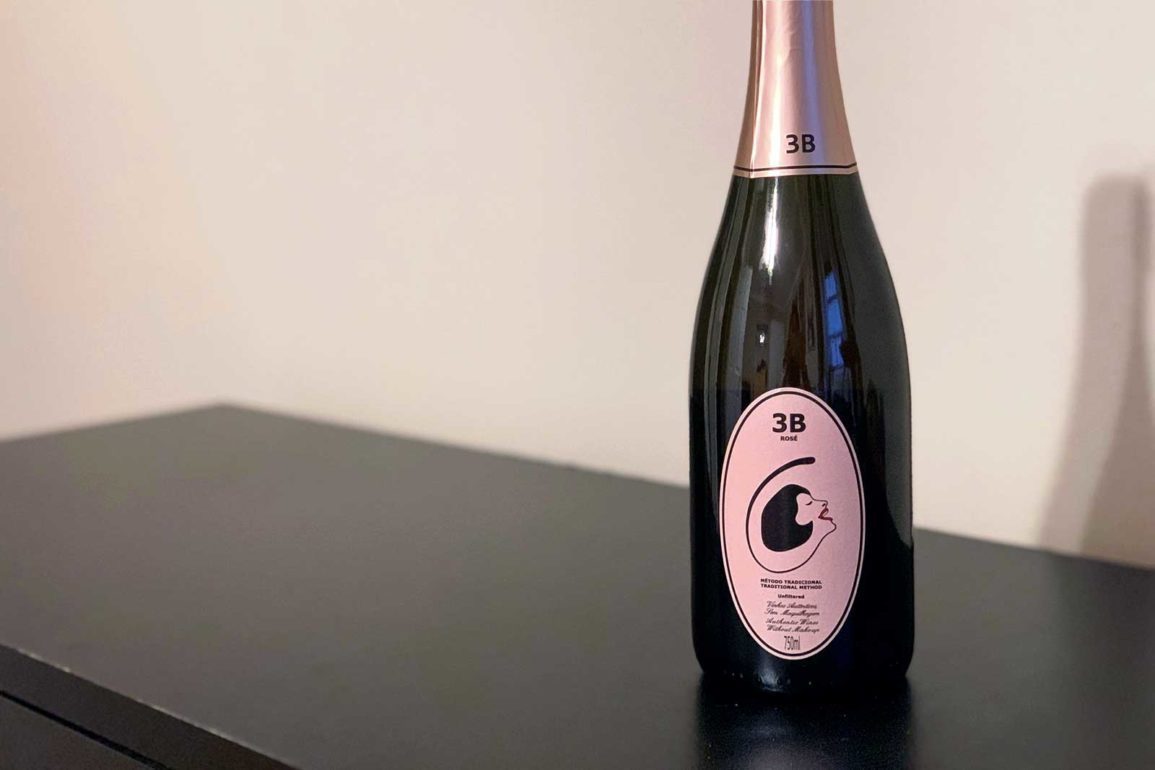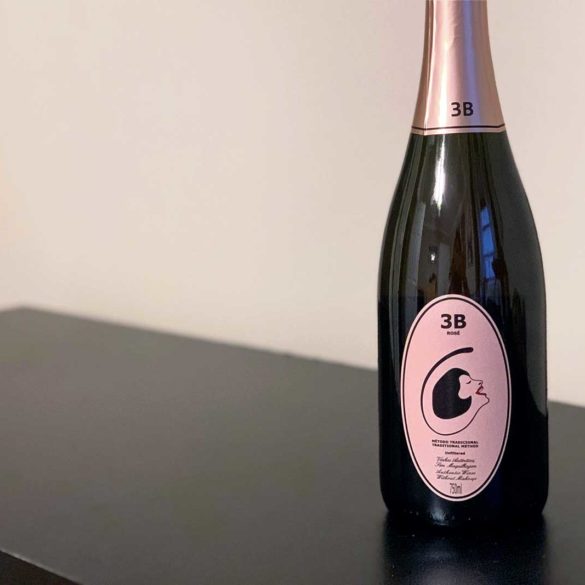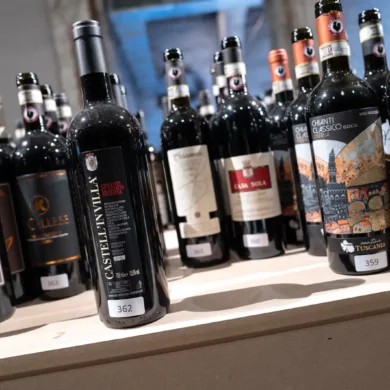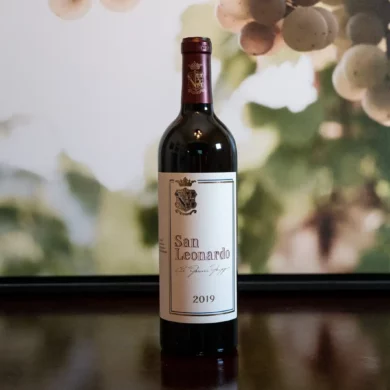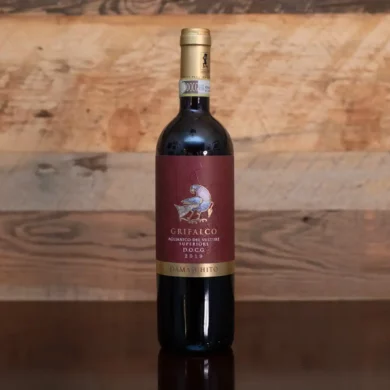There are many ways to look at 3B Rosé by Filipa Pato and William Wouters. It could be a story about indigenous grapes in Portugal. Or a close-up of the Bairrada region, one which is often overshadowed by the neighboring Dão. We could talk about low-intervention winemaking — Pato’s tagline is “wine without makeup,” a phrase which she reiterates like a Spotify playlist on repeat. Or, it could be the generational story of a winemaker learning, then breaking away from, her parent. If it’s a love story you’re after, the couple’s got a meet-cute tale. All apply here.
But at its core, it’s a story about sparkling wine. Delicious sparkling wine. And a sparkling wine that’s only about $17 on the shelf. For a traditional-method sparkling wine, a labor- and time-intensive process, and from a small, family-owned estate, $17 is almost criminal.
Filipa is the daughter of Luis Pato, who is known as the Baga whisperer, a winemaker capable of producing extraordinary results from a finicky local red grape. Today, Luis is one of the few producers in the country able to boast of old-vine Baga.
Taking what she learned from her father, Filipa expanded her training at wineries in Bordeaux, Mendoza, and Australia, before returning home. She met Wouters, a sommelier in Belgium, by selling wine to him, and soon they were back in Portugal, making wine together.
Pato is incredibly high-energy. Hearing her talk about her region and winemaking requires intense concentration in order to take it all in as she volleys among different topics. The complex soils are “lasagna-style” in their layers. She harvests at “the juicy moments.”
Pato is incredibly high-energy. Hearing her talk about her region and winemaking requires intense concentration in order to take it all in as she volleys among different topics. The complex soils are “lasagna-style” in their layers. She harvests at “the juicy moments.” Passionate about biodynamics, she does very little to the carefully tended grapes once they hit the cellar. “We learn from the past — the real past, like a century ago,” she says.
There’s a lot to unpack in this one bottle. Even the simple name — 3B — belies a whole story thread: a love letter to the Baga and Bical indigenous grapes, and how they express themselves in the region of Bairrada. Baga (which Filipa compares to Nebbiolo in the way it expresses itself in Barolo and Barbaresco), meets the saline-tinged, high-acid white grape Bical. Wine is produced via traditional method and is never fined or filtered, which Pato believes retains the wine’s full character (and those fun, textural bubbles). Sometimes when omitting those two steps, I find some wines veer into that “funky” category, but here there’s nothing but bright fruit and energy.
To me, the color is the platonic ideal of a pink wine; there’s a lovely rosy color to draw the eye and boost whatever feel-good endorphins the hue releases in the body, but it’s not the yawn-inducing pale that’s often seen in the summer. There are lots of red fruits, like any good rosé wine should have, but that minerality and saline touch keeps it on the savory side of things. I really want to make this my house bubbles, but it’s often sold out every time I go in to restock my personal fridge (I have no one to blame but myself; when I worked at my local wine shop, it was my most-recommended bottle of sparkling wine). So, if you come across this natural beauty, grab it. With New Year’s Eve around the corner, you seriously can’t beat a delicious sparkler with Champagne aspirations for less than $20.
NV Filipa Pato & William Wouters “3B”Beiras Extra Brut Rose
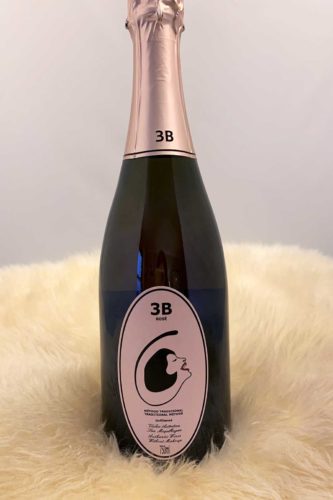 Beiras VR (Alentejo)
Beiras VR (Alentejo)
Grapes: 74% Baga, 26% Bical
Alcohol: 11.5%
Opinion: ★★★★ 3/4 (out of five)
Food-friendliness: Versatile
Value: Exceptional
A beginner might like … that it’s an approachable, tasty sparkling wine that works on a multitude of levels. It’s fresh and lively and totally delicious on its own. But given that there’s a great balance of fruit to savory, it’s a fun one to try with different cuisines. I’m currently partial to shrimp dumplings with this wine, but that could just be my Christmas Day dim sum feast talking.
A wine obsessive might like … that it’s a sparkling wine beyond the usual suspects, and one that takes itself as seriously as many Champagne houses. For those that like to explore lesser-known varieties, here’s a great starting point. Grapes come from chalk and clay mid-slopes, and between the terroir and the zingy acidity, there’s a sense of minerality to the wine. Given the region’s location near the ocean, the cooling influence brings in that acid structure to the grapes, and slows down the ripening of that big, rich Baga.
Note: This article from a new contributor was made possible by subscriptions like yours. Thank you.

